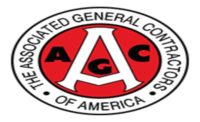"The construction industry has yet to see a sustained loss of momentum, as it remains one of the better performers in this year's faltering economy ," stated Robert A. Murray, vice president of economic affairs for F. W .Dodge. "When commercial building weakened earlier in 2001, the slack was picked up by other project types. In October, improved contracting for commercial and institutional building partially offset the declines reported for single family housing, public works, and electric utilities."
Nonbuilding construction, at $113.5 billion, fell 12% in October. The comparison is against an exceptionally strong September (up 24% over the prior month), and October was still more than 20% above the average monthly pace for nonbuilding construction in 2000. Electric power plant construction in October dropped 21%, highways and bridges were down 19%, while relatively small declines were registered by sewers (down 4%), water supply systems (down 2%), and river/harbor development (down 1%). Other transportation public works climbed 27%, helped by the start of $200 million mass transit project in Chicago.
Murray indicated, "Even with October's decline, the public works sector has been very strong during 2001. It's not likely to play the same expansionary role in 2002, however, given tighter fiscal conditions for the federal and state governments. In addition, it now appears that the federal stimulus package being debated by Congress will not include greater spending for public works programs."
Nonresidential building in October advanced 11% to $172.1 billion. The commercial categories in particular showed unexpected gains following depressed contracting during the summer. Hotel construction jumped 73% after a very weak September, boosted by the start of a $115 million convention-center related hotel in Houston and a $75 million casino-related hotel in Henderson, NV. Warehouses were up 29%, while office construction grew 16% with the help of a $75 million office complex in Torrance, CA.
Store construction in October posted a comparatively small 2% gain. Murray stated, "The October upturn for commercial building is likely just a brief departure from a more general downward trend, but it does suggest that the correction now underway may become less severe in coming months."
The institutional side of the nonresidential market featured a 7% gain for schools, as this structure type continues to show strength, and a 36% increase for healthcare facilities. On the negative side, public buildings (courthouses and detention facilities) were down 12%, and amusement-related projects plunged 33%. The nonresidential total was also constrained by continued weakness for manufacturing plant construction, which fell 36% in October.
Through the first 10 months of 2001, total construction on an unadjusted basis was 3% higher than the same period in 2000. By major sector, residential building was up 4% and nonbuilding construction surged 14%, but nonresidential building trailed its 2000 amount by 5%. By region, total construction in the January-October period showed this pattern—the South Central, up 6%; the West, up 4%; the Midwest, up 3%; the South Atlantic, unchanged; and the Northeast, down 1%.


